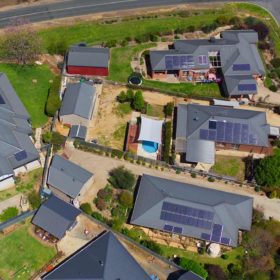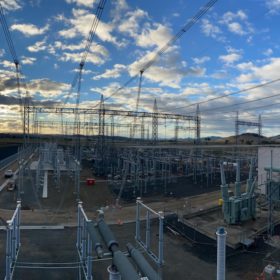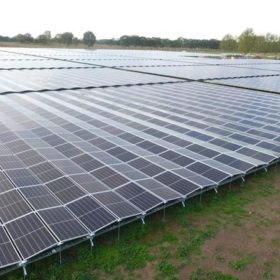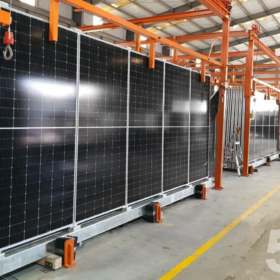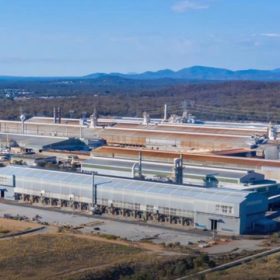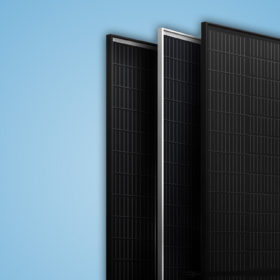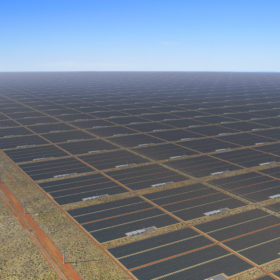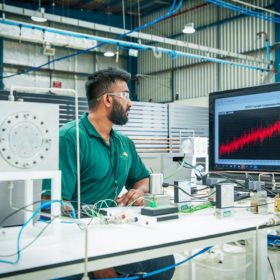Rooftop solar sparks record decline in wholesale power prices
The continued rollout of rooftop solar PV and large-scale wind and solar farms continues to reshape Australia’s electricity market with new data released by the Australian Energy Market Operator revealing that the penetration of renewable energy continues to drive new records in the National Electricity Market.
LG launches hybrid inverter for residential battery range
South Korean battery manufacturer LG Energy Solution has launched a new inverter in the Australian market, adding a 5 kW hybrid inverter to its Residential Energy Storage Unit (RESU) Home battery energy storage range.
Made-in-WA cathode precursor plant gets underway
Construction has begun on a manufacturing pilot project to see battery-grade nickel, cobalt and manganese for precursor battery cathode materials (PCAM) in Perth. The facility is expected to be completed in early 2022 and is one of a number of developments that will look to establish Western Australia (WA) as a materials supplier to the growing battery manufacturing industry.
AEMC reveals final rule to shore up system strength
With the transformation of Australia’s power system accelerating, the Australian Energy Market Commission has unveiled a raft of reforms to improve system strength in the national grid, predicting the changes will smooth the way for new energy resources including large-solar PV and batteries to connect to the grid.
Providence to trial hydrogen-lithium battery at solar farms
Australian clean energy investment firm Providence Asset Group will roll out hydrogen-lithium battery technology at its solar farms after partnering with the Commonwealth Bank to fund a portfolio of 10 community-based solar plants in regional Victoria as part of the group’s larger ambitions to develop up to 40 ~5 MW solar farms across the eastern states.
5B backs bigger is better with new generation of modular solar solution
Sydney-based prefabricated solar array manufacturer 5B has taken the wraps off a new generation of its re-deployable modular Maverick solar technology which it says is not only quicker and easier to install than the previous model but 30% more powerful.
Large-scale renewable uptake to help Rio Tinto’s brand rebuild
Mining giant Rio Tinto has been on the back-foot since its destruction of 46,000-year-old sacred indigenous sites last year, costing one chief executive his job and one country a timeless piece of its cultural heritage. Along with the impacts of Covid-19 and stock price decline, the company is seeking to rebuild its brand with improved emissions reduction targets, which will see multi-gigawatt solar and wind installations.
Big modules head for standardisation
PV manufacturing giant Trina Solar says it has agreed with other industry players on a set of standard dimensions and other technical specifications for PV modules utilising 210mm wafers – the largest currently available on the market. The manufacturer says it expects the China Photovoltaic Industry Association to formally release the standard before the end of October.
Sun Cable names ‘global experts’ to deliver massive solar+storage project
Singapore-based Sun Cable has unveiled a powerhouse line-up of international engineering and advisory companies to help it deliver the world’s biggest solar PV and battery energy storage project being developed in Australia’s remote far north.
Hydrogen innovator to pioneer HERO technology in manufacturing hub
The first commercial application of Australian hydrogen research and development company Star Scientific’s award-winning Hydrogen Energy Release Optimiser technology has been given the green light with the company announcing it has partnered with manufacturing network Central Coast Industry Connect to establish a new industry-led hydrogen cluster on the New South Wales Central Coast.
